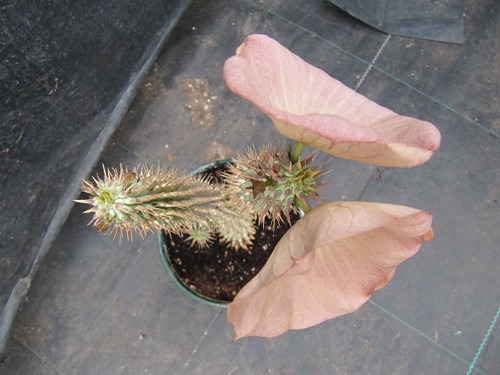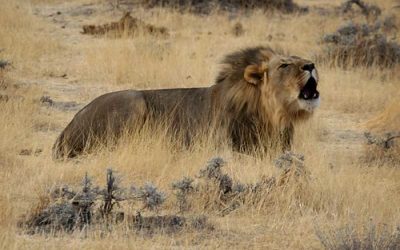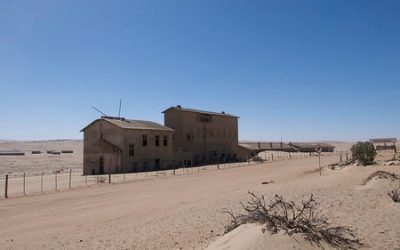Geography and Environment of Bushman Namibia
Bushman Namibia, also known as the San people, inhabit some of the most striking landscapes in southern Africa, characterized by vast deserts, rugged mountains, and sparse grasslands. Their environment is shaped by arid conditions and seasonal rainfall, creating unique ecosystems that support a diverse array of wildlife. The geography of Bushman Namibia not only influences their traditional livelihoods and cultural practices but also highlights the importance of conserving fragile habitats in the region.
Location and Landscape Features
The Bushman in Namibia, also known as the San people, primarily reside in the southern and eastern regions of Namibia, particularly within the iconic Kalahari Desert. Their traditional territories encompass vast areas characterized by arid, semi-arid landscapes and sparse vegetation, reflecting the harsh environmental conditions of the region.
The landscape features surrounding the Bushman communities include sprawling sand dunes, rocky outcrops, and flat plains, which are essential elements of the Kalahari Desert ecosystem. These landscapes provide vital resources such as game animals and plant foods, shaping the Bushman’s semi-nomadic lifestyle and survival strategies.
The environment of Bushman Namibia is marked by extreme temperatures, low rainfall, and challenging terrain, which have fostered a deep understanding and adaptation to their surroundings. Despite the arid conditions, the region supports a variety of wildlife and plant species integral to the Bushman’s way of life, showcasing a resilient and intricate relationship between the inhabitants and their environment.
Climate and Weather Patterns
The Bushman community in Namibia is located in a region characterized by diverse geographical features and unique environmental conditions. The area encompasses arid deserts, semi-arid plains, and rocky plateaus that shape the landscape and influence local ecosystems. This environment supports a variety of flora and fauna adapted to the harsh conditions, including desert-adapted elephants, oryx, and various reptiles. The landscape is also marked by distinctive rock formations and sparse vegetation, highlighting the resilience of both the environment and its inhabitants.
Namibia’s climate and weather patterns are predominantly arid and semi-arid, with significant variations depending on specific regions. The Bushman areas experience hot temperatures during the day, especially in summer, which can reach over 40°C (104°F), while evenings tend to be cooler. Rainfall is limited and irregular, often occurring during short, intense thunderstorms primarily in the summer months from November to March. This scant precipitation contributes to the desert-like conditions and shapes the adaptation strategies of local wildlife and communities. Overall, the climate of Bushman Namibia reflects its position within the Namib Desert and surrounding arid zones, creating a challenging yet uniquely resilient environment.”
Flora and Fauna
Bushman Namibia, also known as the San or Basarwa, inhabits the arid and semi-arid regions of southern Namibia, particularly in the Kalahari Desert. The landscape is characterized by vast sand dunes, sparse vegetation, and rocky outcrops, creating a unique environment adapted to extreme dryness and temperature fluctuations. The region’s geography influences the flora and fauna, making it a habitat home to specialized species that thrive in such conditions.
The flora of Bushman Namibia is primarily composed of drought-resistant plants such as grasses, shrubs, and succulents. Common plant species include the Namaquae, grasses like red grama, and hardy bushes such as the Shepherd’s tree. These plants have adapted to conserve water and survive during long dry seasons, providing vital resources for local wildlife and the San community.
The fauna in Bushman Namibia features a variety of animals well-suited to survive in desert conditions. Notable species include various antelopes like oryx and springbok, meerkats, baboons, and nocturnal creatures such as the shrew and desert hedgehog. Reptiles like monitor lizards, geckos, and various snake species are abundant, taking advantage of the environment’s warm climate. Birds such as raptors, guinea fowl, and other desert-adapted species are also prevalent. These animals have developed unique adaptations, such as water conservation and specialized hunting and foraging behaviors, to thrive in the challenging environment of the Kalahari Desert.
The Bushman People: Culture and Society
The Bushman people, also known as the San, are one of the oldest indigenous groups in Namibia, with a rich cultural heritage that has endured for thousands of years. Their society is characterized by a deep connection to the land, a remarkable mastery of survival skills, and unique traditions that reflect their harmonious relationship with nature. Exploring their culture provides valuable insights into their way of life, spiritual beliefs, and social organization as they continue to preserve their identity in a changing world.
Historical Background
The Bushman people, also known as the San people, are indigenous inhabitants of Southern Africa, with a significant population in Namibia. Their culture is deeply rooted in a nomadic way of life, characterized by a profound knowledge of the natural environment and a rich tradition of storytelling and spiritual practices. They are renowned for their exceptional skills in hunting, spear-throwing, and foraging, which have been passed down through generations. The Bushmen’s social structure is traditionally organized into small, mobile groups that rely on cooperation and shared resources to survive in harsh desert and semi-desert regions.
Historically, the Bushmen are considered among the earliest inhabitants of Southern Africa, with archaeological evidence dating back tens of thousands of years. Their presence in Namibia predates many other groups in the region, making them one of the oldest continuous cultures in Africa. Throughout history, they faced marginalization and displacement due to colonial expansion, land dispossession, and modern development. Despite these challenges, the Bushmen have maintained many aspects of their cultural identity, including their unique languages, which belong to the Khoisan language family, characterized by distinctive click sounds.
Today, the Bushman communities in Namibia continue to preserve their cultural heritage while adapting to contemporary social and economic realities. Efforts are ongoing to recognize their land rights, protect their traditional knowledge, and promote sustainable tourism that showcases their rich cultural practices. Their resilience highlights their enduring connection to the land and their ancestral traditions, making them a vital part of Namibia’s diverse cultural landscape.
Language and Traditions
The Bushman people, also known as the San or Basarwa, are among the oldest indigenous groups in Namibia, with a rich cultural heritage that dates back thousands of years. Their society is traditionally nomadic, relying on hunting and gathering for sustenance, which has shaped their unique social structures and communal lifestyle. Respect for nature and the environment is deeply embedded in their way of life, reflecting their close relationship with the land they inhabit.
Their language is part of the Khoisan family, characterized by distinctive click sounds that are a hallmark of their speech. These click consonants set their language apart from many others, serving not only as communication tools but also as an integral aspect of their cultural identity. Many Bushman communities still speak their native language, although efforts are underway to preserve and revitalize it amidst external influences.
Traditional Bushman practices include intricate rock art, storytelling, and ceremonial dances, which serve as means to pass down history, spiritual beliefs, and social values from generation to generation. Their spiritual beliefs often involve reverence for nature spirits and ancestors, guiding their understanding of the universe and their place within it. Despite modern challenges, the Bushman people continue to maintain their cultural traditions while navigating societal changes in Namibia.
Social Structure and Lifestyle
The Bushman people, also known as the San or Ju/’hoansi, are indigenous inhabitants of Namibia known for their rich cultural heritage and deep connection to the land. Their culture emphasizes a harmonious relationship with nature, utilizing extensive knowledge of the environment for survival through hunting, gathering, and tracking skills. Socially, the Bushman society is organized into small, egalitarian groups where decisions are made collectively, and leadership is often informal, based on experience and skill rather than authority.
Royal and familial ties play a significant role in social organization, with clans forming the basis of their social structure. Their lifestyle is primarily mobile, adapted to the arid and semi-arid landscapes of Namibia, allowing them to efficiently exploit seasonal resources. Traditional practices include storytelling, dance, and song, which preserve their history and cultural identity. Despite modern influences and challenges, the Bushman people continue to maintain their unique customs and social cohesion, embodying a resilient and adaptive way of life in Namibia.
History and Heritage
The history and heritage of Bushmen in Namibia offer a fascinating glimpse into one of the world’s oldest cultures. With roots that stretch back thousands of years, the Bushmen, also known as San people, possess a rich legacy of hunting, storytelling, and deep connection to their land. Exploring their traditions and historical journey provides valuable insights into their resilience and enduring presence in Namibia’s diverse cultural landscape.
Ancient Roots and Archaeological Sites
The history and heritage of Bushman Namibia are deeply rooted in its ancient origins, reflecting a rich cultural tapestry that has persisted for thousands of years. The Indigenous San people, commonly known as Bushmen, are among the oldest inhabitants of the region, with archaeological evidence dating back to tens of thousands of years. Their enduring presence is intertwined with Namibia’s prehistoric sites, which offer a glimpse into early human life and the development of their unique hunter-gatherer traditions.
Numerous archaeological sites across Namibia serve as vital windows into the distant past. Notable among these are rock art sites such as Twyfelfontein and the Brandberg Mountain, where intricate petroglyphs depict scenes of hunting, spiritual rituals, and everyday life of the San people. These ancient carvings and paintings provide invaluable insights into the cultural and spiritual beliefs of the ancestors, helping to preserve their legacy for future generations.
As a country rich in archaeological treasures, Namibia’s heritage sites not only highlight the resilience and continuity of the Bushman people but also attract researchers and tourists eager to explore the depths of human history. Preservation of these sites is essential in honoring the ancient roots of the San community and in understanding the broader human story that unfolds across this remarkable landscape.
Colonial Era and Post-Independence Changes
The history and heritage of Bushman Namibia reflect a rich tapestry of indigenous culture, colonial influence, and post-independence developments. The San people, commonly known as Bushmen, are among the oldest inhabitants of the region, with a deep-rooted connection to the land and its traditions. During the colonial era, Namibia experienced significant changes as German and South African administrations imposed their governance, impacting the social and cultural structures of the Bushman community. These colonial powers often marginalized indigenous groups, leading to social upheaval and loss of traditional practices. After Namibia gained independence in 1990, efforts were made to preserve and revitalize the heritage of the Bushman people, recognizing their unique contributions to the country’s cultural diversity. Today, their history is acknowledged through cultural preservation initiatives, efforts to protect their land rights, and the promotion of their languages and traditional knowledge.
- Pre-Colonial Era: The Bushmen developed intricate hunter-gatherer societies, with rich oral traditions, cave paintings, and deep spiritual connections to nature.
- Colonial Period: German rule from 1884 to 1915 and subsequent South African administration introduced new governance, often suppressing indigenous customs and displacing communities.
- Post-Independence Changes: Namibia’s independence fostered recognition of indigenous rights, cultural revival projects, and attempts to integrate Bushman heritage into national identity.
- Contemporary Challenges: Despite progress, issues such as land rights, access to resources, and cultural preservation continue to shape the community’s ongoing struggle for recognition and autonomy.
Preservation of Cultural Heritage
The Bushmen of Namibia, also known as the San people, possess a rich cultural heritage that dates back thousands of years. Their history is deeply intertwined with the landscapes of Southern Africa, particularly the Namib Desert, where they have lived as hunter-gatherers for generations. Preserving their cultural heritage is essential to maintaining their unique identity and understanding human history’s earliest ways of life.
Efforts to preserve the San people’s cultural heritage in Namibia include safeguarding ancient rock art, which depicts scenes from traditional life and spiritual beliefs. These artworks, found in places like Twyfelfontein, are invaluable UNESCO World Heritage sites that offer insights into early human expression and social structures. Additionally, protecting their language and oral traditions helps sustain their cultural knowledge for future generations.
However, the San people face challenges from modern development, land disputes, and limited access to resources, which threaten their traditional way of life. Preservation initiatives in Namibia aim to involve the community in conserving their heritage, promoting sustainable tourism, and recognizing their rights. Such efforts are vital not only for honoring their history but also for empowering them to maintain their cultural identity in a rapidly changing world.
Living in Harmony with Nature
Living in harmony with nature is a fundamental aspect of the Bushman way of life in Namibia. This ancient culture embodies a deep respect for the environment, drawing sustainability and survival skills from generations of close connection to the land. Their ability to coexist peacefully with the surrounding wilderness highlights the importance of preserving natural ecosystems and embracing sustainable practices in our modern world.
Traditional Practices and Skills
Living in harmony with nature is a fundamental aspect of the Bushmen communities in Namibia. These indigenous people have historically coexisted with their environment, utilizing traditional practices and skills passed down through generations to sustain their way of life. Their deep understanding of the land, animals, and plants allows them to thrive in the challenging desert terrain while minimizing environmental impact.
The Bushmen’s traditional practices encompass a range of vital skills that enable them to hunt, gather, and manage resources responsibly. These practices include tracking animals across vast distances, knowledge of edible and medicinal plants, and crafting tools from natural materials. Such customs not only support their survival but also preserve the ecological balance of their surroundings.
- Tracking and hunting techniques using natural signs and stealth
- Gathering edible and medicinal plants with detailed knowledge of seasonal availability
- Crafting tools and weapons from wood, bone, and stone
- Participating in communal rituals that reinforce their symbiotic relationship with nature
- Maintaining oral traditions that educate younger generations about sustainable living
By upholding these traditional practices, the Bushmen of Namibia continue to live in harmony with their environment, ensuring the preservation of their culture and the natural landscape for future generations.
Community-based Conservation Efforts
Living in harmony with nature is a fundamental aspect of the Bushman community in Namibia, whose lifestyle has historically been characterized by sustainable practices and a deep respect for their environment. These indigenous groups rely on their knowledge of the land, plants, and wildlife to meet their needs without causing long-term harm to their surroundings. Community-based conservation efforts in Namibia aim to preserve this delicate balance by involving local populations in protecting their natural resources and promoting sustainable use of land and wildlife.
In Namibia, initiatives such as community conservancies empower Bushman communities to manage and benefit from their natural heritage. These programs not only help conserve biodiversity but also improve local livelihoods by providing economic opportunities through eco-tourism and sustainable hunting. By actively participating in conservation efforts, the Bushman community maintains their traditional way of life while contributing to the broader goal of environmental sustainability.
This collaborative approach fosters a sense of stewardship among community members, ensuring that future generations can continue living harmoniously with nature. Overall, community-based conservation in Namibia exemplifies how indigenous knowledge and local leadership can create effective strategies for environmental preservation and sustainable development.
Challenges and Opportunities for Sustainability
Living in harmony with nature presents both significant challenges and opportunities for sustainability, especially in regions like Namibia where the Bushmen (San people) have coexisted with the environment for centuries. The Bushmen’s traditional lifestyle relies heavily on sustainable hunting, gathering, and deep knowledge of the local ecosystem, embodying an ancient relationship with nature that offers valuable lessons for modern sustainability efforts. However, pressures such as land degradation, tourism, and modern development threaten their way of life and the delicate balance they maintain with their environment.
Despite these challenges, the Bushmen’s deep ecological knowledge provides opportunities to develop sustainable practices that can benefit broader conservation initiatives. Their understanding of local flora and fauna can aid in biodiversity preservation and ecosystem management. Additionally, promoting their cultural heritage supports eco-tourism that respects the environment and empowers indigenous communities. Emphasizing coexistence and integrating traditional knowledge with modern conservation strategies can help address environmental issues while ensuring that the Bushmen’s culture and livelihoods are preserved for future generations.





0 Comments